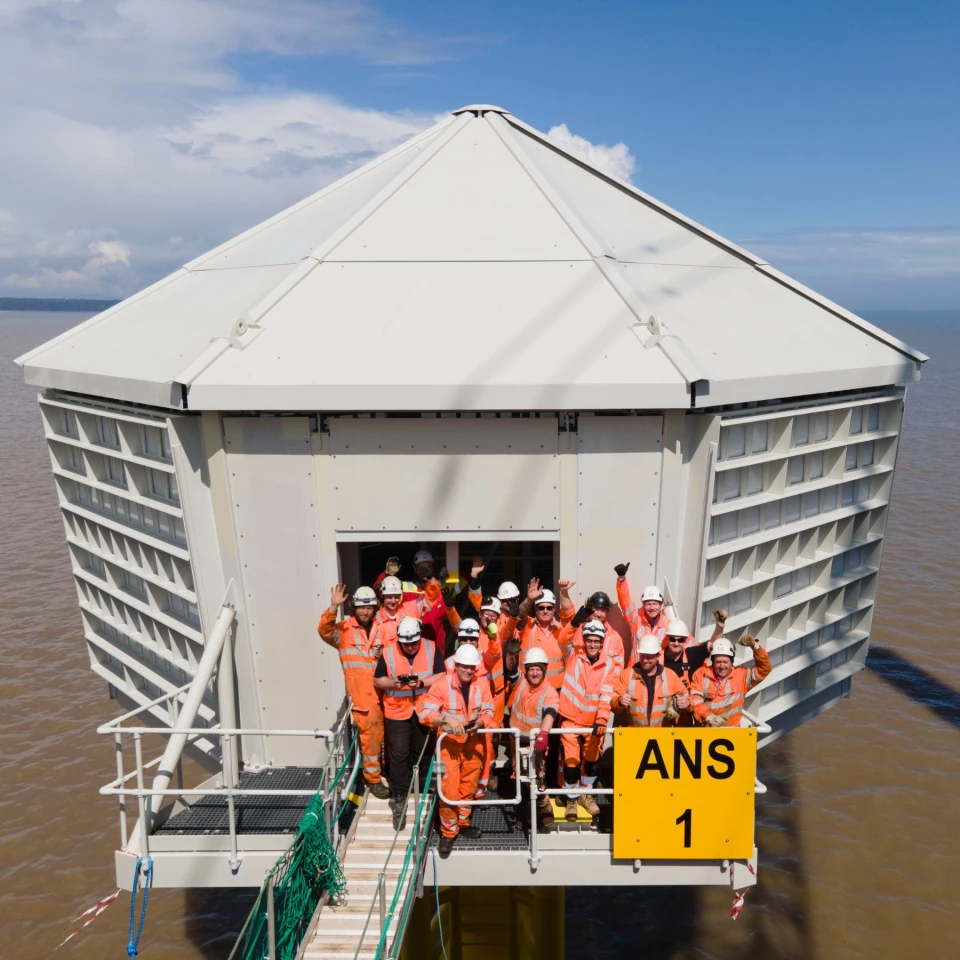Back in August last year, Red7Marine joined a project led by Danish multinational Ørsted to design and install artificial nesting sites for threatened seabirds close to the Suffolk shoreline as part of the upcoming Hornsea 3 offshore windfarm project.
Ørsted was awarded the contract for the Hornsea 3 project by the UK Department for Business, Energy and Industrial Strategy in July of last year, and an "ecological compensation measure" was included as part of that arrangement.
While the 2,852-MW wind farm is to be located 160 km (99.4 miles) off the Yorkshire coast (joining the Hornsea 1 and Hornsea 2 installations for a total capacity of more than 5 GW, and "covering the power consumption of approx. 5 million UK homes"), three artificial nesting structures have been installed off the Suffolk shoreline – two around a kilometer (0.62 miles) out from Lowestoft and a third positioned 1.4 km (0.87 miles) from the Royal Society for the Protection of Birds' Minsmere Nature Reserve.

Hailed as the first of its kind, the purpose-built structures have been designed by a team of ecologists, architects and engineers to attract the vulnerable black-legged kittiwake. They each have eight side walls, seven featuring narrow ledges fitted with compartments to mimic the natural nesting sites of cliffs and the remaining side home to emergency access barn doors.
The installation process began with the structural elements being assembled at the Port of Lowestoft, and then hauled out to the sites on Red7Marine's Typhoon 3000 and Haven SeaChallenger jack-up barges.
For each artificial nesting structure, a huge monopile was lifted from a jack-up barge, pitched through a bespoke piling gate and installed using a vibratory hammer before a self-driving percussion hammer forced it down 30 m (98.4 ft) below the seabed. A topside nesting structure was then craned into position and bolted on.

In accordance with requests from the local port authority and coastguard, the base has been painted yellow and there are navigation lights on the off-white nesting structure. Each unit is home to around 500 nesting spaces, which will be monitored for occupancy and productivity, and the data shared with local groups like the Lowestoft Kittiwake Partnership.
"We are delighted to announce the successful completion of ‘Project RISSA’ involving the installation of three artificial nesting structures," said Kristen Branford, Managing Director at Red7Marine. "These structures will play a crucial role in supporting an important and vulnerable species, whilst enabling the generation of clean, green electricity for the Hornsea 3 project. This project is the first of its kind and required meticulous planning and consideration, and we are proud to have achieved this significant milestone."
Source: Red7Marine






